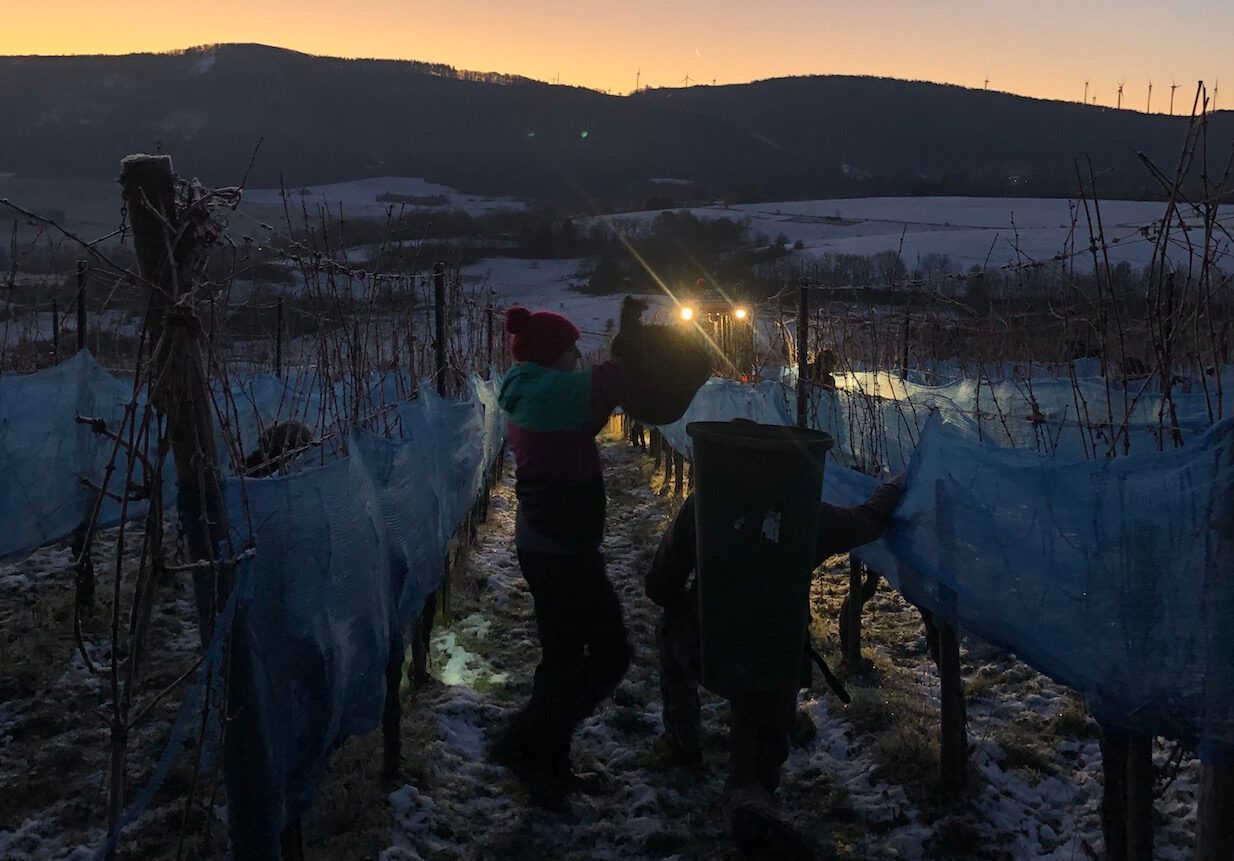“This special event is really exciting: you get up early in the night, it is dark and freezing cold outside. In the vineyard, the atmosphere is absolutely quiet and very peaceful. The air is crystal clear, no clouds above, only stars and the moon.”
The Markus Molitor wine estate is located amidst the Wehlener Klosterberg vineyards in the middle Mosel region where Riesling, Pinot Blanc and Pinot Noir are grown on 15 steep-sloped sites. All wines are from low-yielding vines, and the wine fermented spontaneously in the traditional manner in large wooden barrels without the use of stabilising measures or additives.
How many different types of wine do you produce?
Due to the aim of showing every single vineyard character as well as the strict selection process of the berries´ quality levels, the estate produces approximately 80 different wines per vintage – each one absolutely unique in its combination of vintage character, vineyard character, ripeness level and sweetness degree.
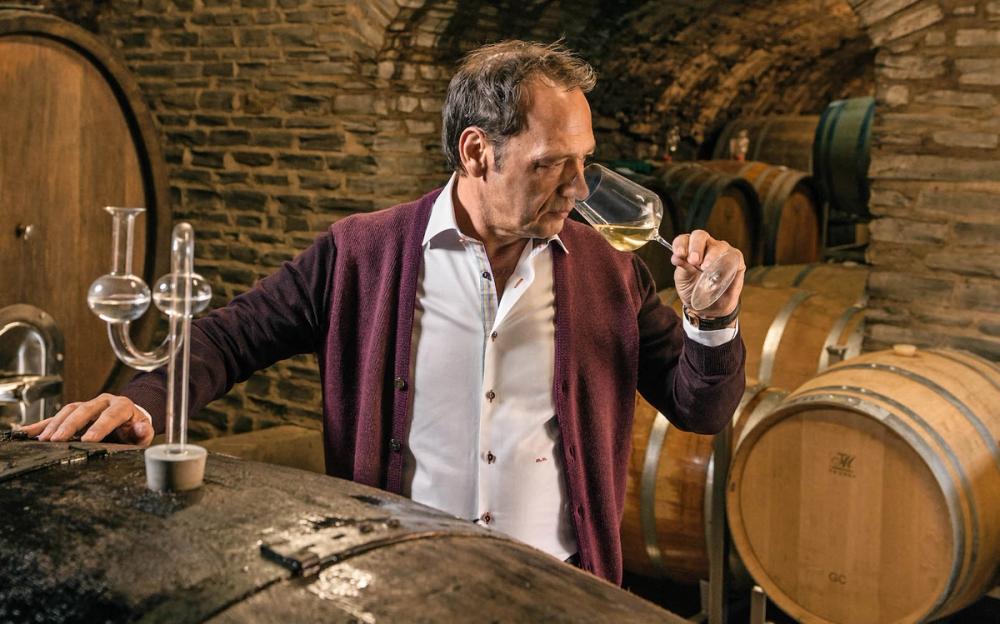
Markus Molitor
Which are the most popular categories for the estate?
Traditionally, wineries from the Mosel wine growing area focus on the off-dry and sweet Rieslings. Besides that, Markus Molitor is very popular for dry Rieslings, as well as the specialities Pinot Blanc and Pinot Noir.
How important is it to make an Eiswein?
Eiswein is a very popular category for wine lovers all over the world. Due to the fact that it is not possible to produce it anywhere or in any vintage, it is important to make Eiswein whenever possible for being able to offer a really rare specialty.
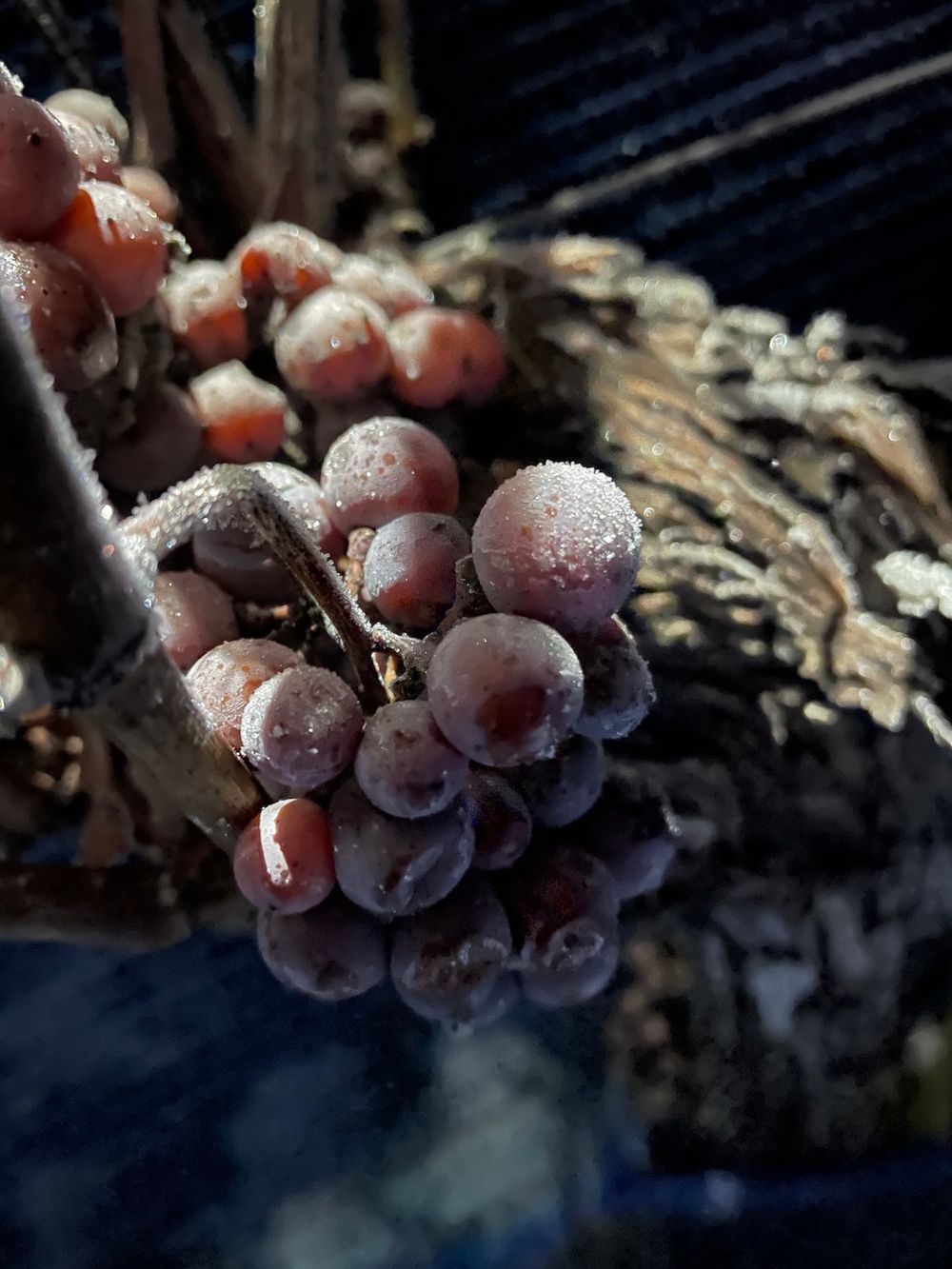
The grapes must be at least -7° C for the process to work
How many times is it possible to make an Eiswein in a decade? Is this number reducing? If so is that because of climate change do you think?
It is hard to say a number because it is absolutely insecure every year. But, if one looks back to the last century and compares it to the present, the number has dramatically been reduced. For example, in 1998 there were three days in November where we were able to harvest Eiswein in our warmest southfacing vineyard sites during daytime – nowadays we nearly have to pray for one night in the whole winter with at least -7° C. We believe that this is an effect of climatical changes. We therefore focus more on “cooler” vineyards in side valleys to produce Eiswein.

Harvesting at the Brauneberger Mandelgraben, January 11, 2021
Briefly explain the process for making an Eiswein
The grapes have to be completely frozen, still hanging on the vines. Therefore, we normally need to have at least -7°C for several hours. The berries are picked and transported to the winery very fast – the grapes must still be frozen while being pressed. It is the water in the berries which freezes first, the concentrated juice full of extracts is still liquid, therefore it is separated from the ice during the pressing. For this we use our gentle and smooth basket press. The juice is fermented in small casks by natural yeasts only.
At what point do you decide to leave fruit on the vine? And how much do you gamble? What happens to the fruit if it doesn’t freeze? Do you make Beerenauslese or Trockenbeerenauslese?
We know which vineyards are predestined for making Eiswein, therefore we treat them a bit differently the whole vegetation period through: we try to keep the berries completely healthy, even for a longer time than for the ‘normal’ vineyards. We try to gamble as little as possible, but still it is a huge risk to take: will it be cold enough? And at what point of time? We wait as long as somehow possible, but if the fruit does not freeze, the grapes are lost for this vintage.
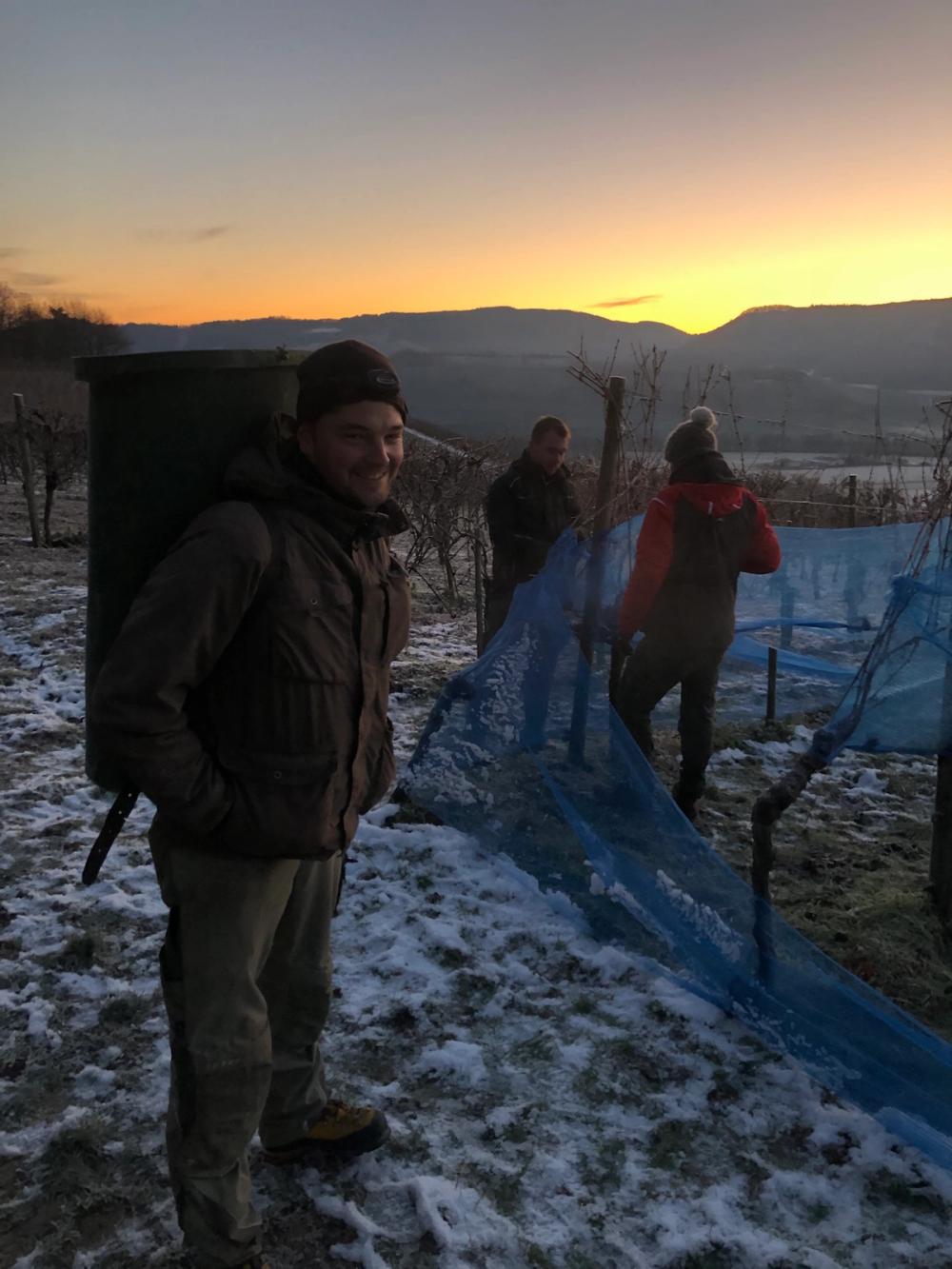
What special ‘magic’ does an Eiswein have – from its picking to its drinking?
Waiting for the right point of time to harvest Eiswein is like waiting for Christmas to come. This special event is really exciting: you get up early in the night, it is dark and freezing cold outside. In the vineyard, the atmosphere is absolutely quiet and very peaceful. The air is crystal clear, no clouds above, only stars and the moon. Dim light by headtorches show you the grapes to harvest. It is definitely magic when the sun rises slowly.
Drinking Eiswein always reminds us of these special hours outside in the vineyard. But also the taste experience is absolutely unique: the precise, crystal clear character, the high concentration of fruit and mineral, the outstanding freshness – just amazing. This is the magic in taste that only nature is able produce!
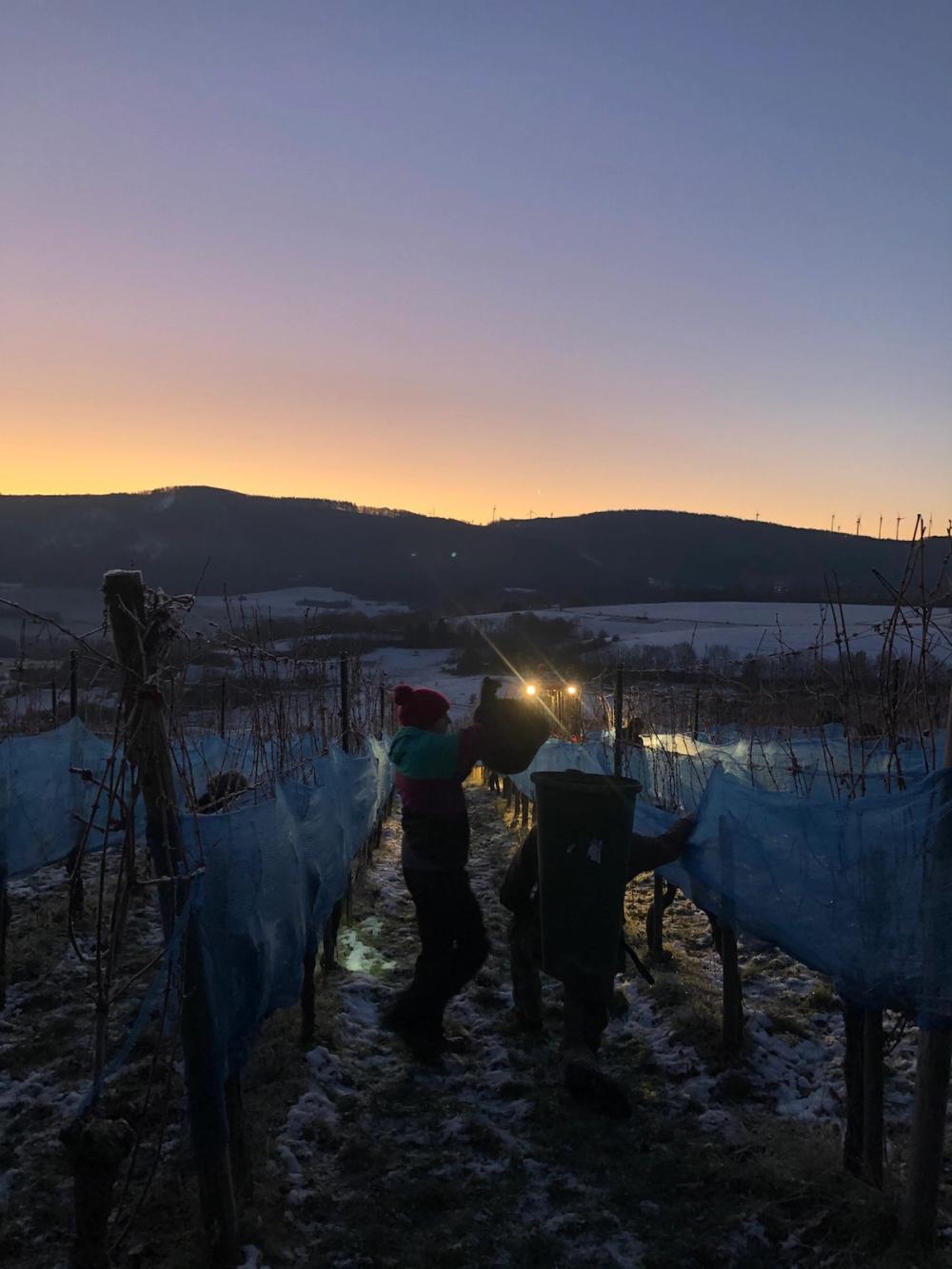
What kind of people buy it? Is it more popular/ less popular?
It is a specialty, very rare and limited – and it is getting more limited year by year. Therefore the popularity grows all over the world. Wine collectors, but also interested and curious amateurs buy these elixirs. The high concentration and the outstanding acidity structure let the Eisweins stay fresh and lively for decades – these wines are made to mature. Therefore a bottle of Eiswein is also a nice present for future generations.
What is the oldest bottle of Eiswein you have at the estate?
As the winery is very young – we started in 1984 – we could only offer Eiswein from the 1980s or younger. Markus Molitor’s first Eiswein is from the 1986 vintage.
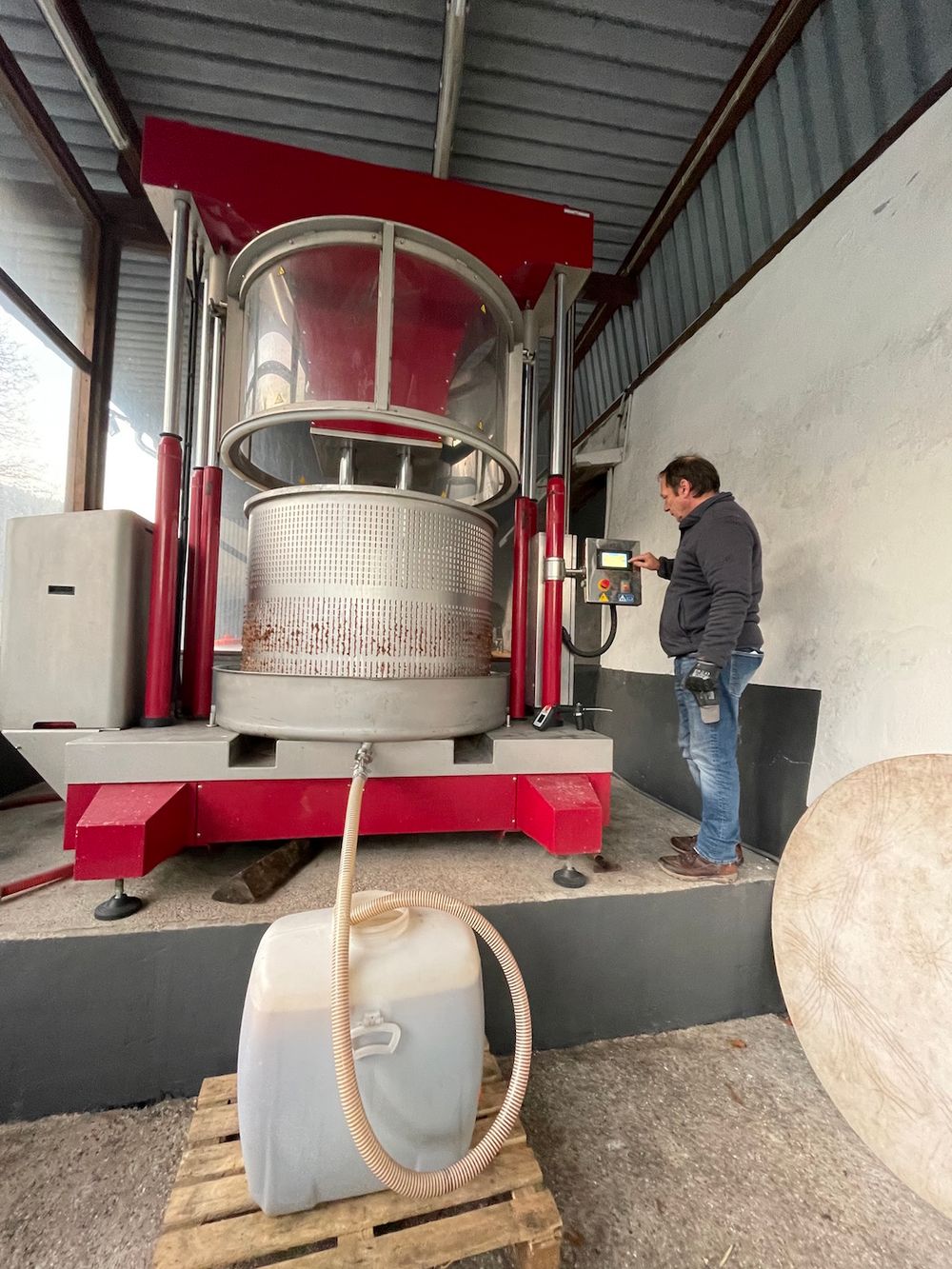
The basket press at work. Markus Molitor’s wines are typical of the Mosel – a unique balance of fruit and minerality, sweetness and acidity.
What is the capacity of the estate (ie. in total number of bottles?)
Depending on the vintage, the estate produces approximately half a million bottles.
Which are your most important markets – both Germany and abroad?
50% of the total production is exported to more than 50 different countries all around the world. The main export markets are the Scandinavian markets as well as several Asian ones. The other 50% stay on the domestic market with the focus set on the off-trade sector.
The wines of Markus Molitor are imported into the UK by Bibendum.
